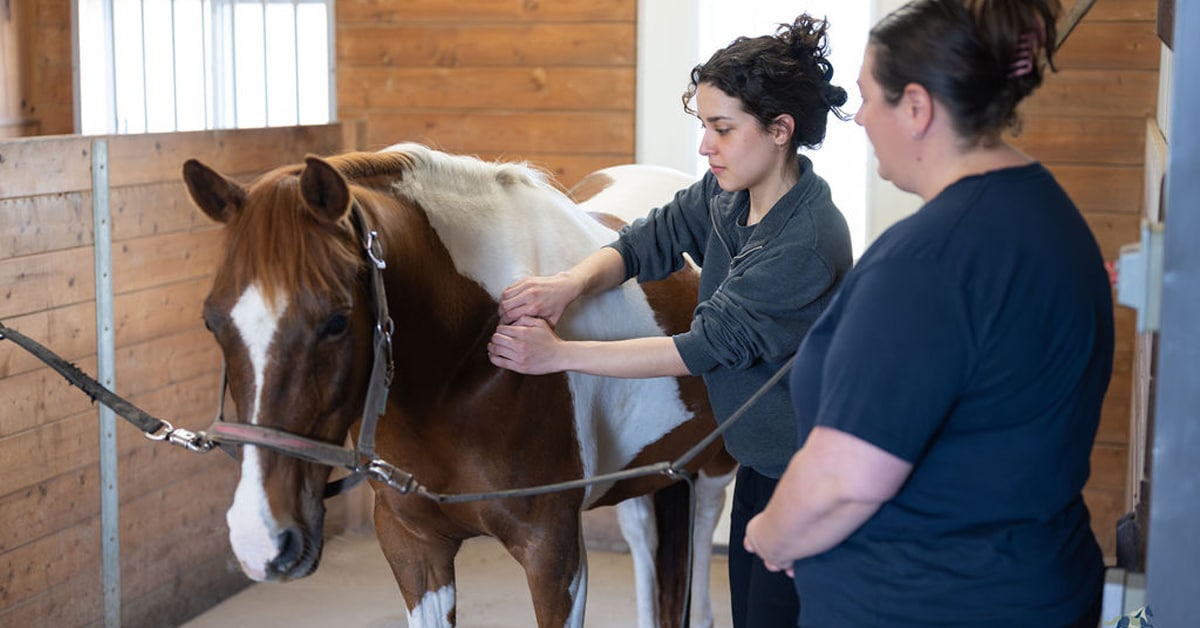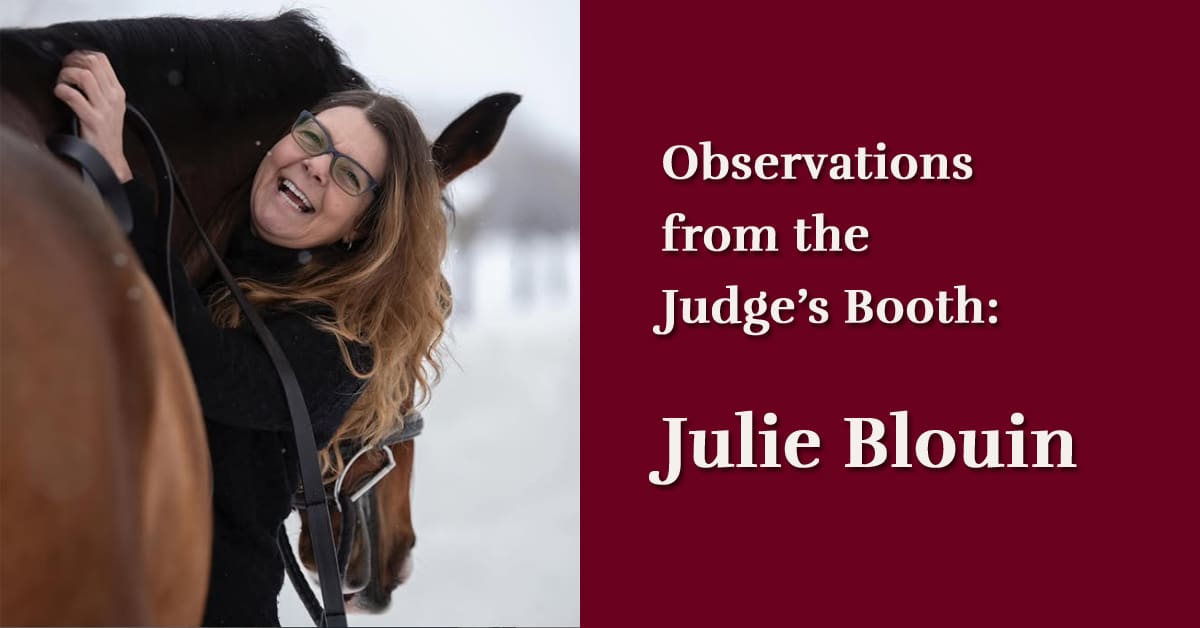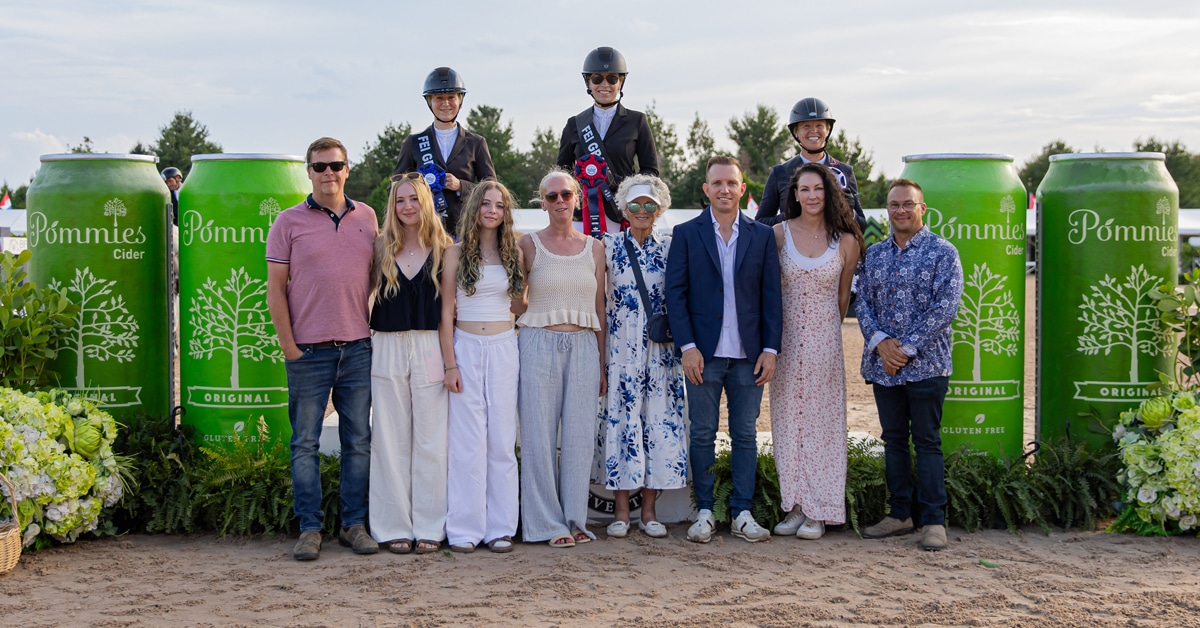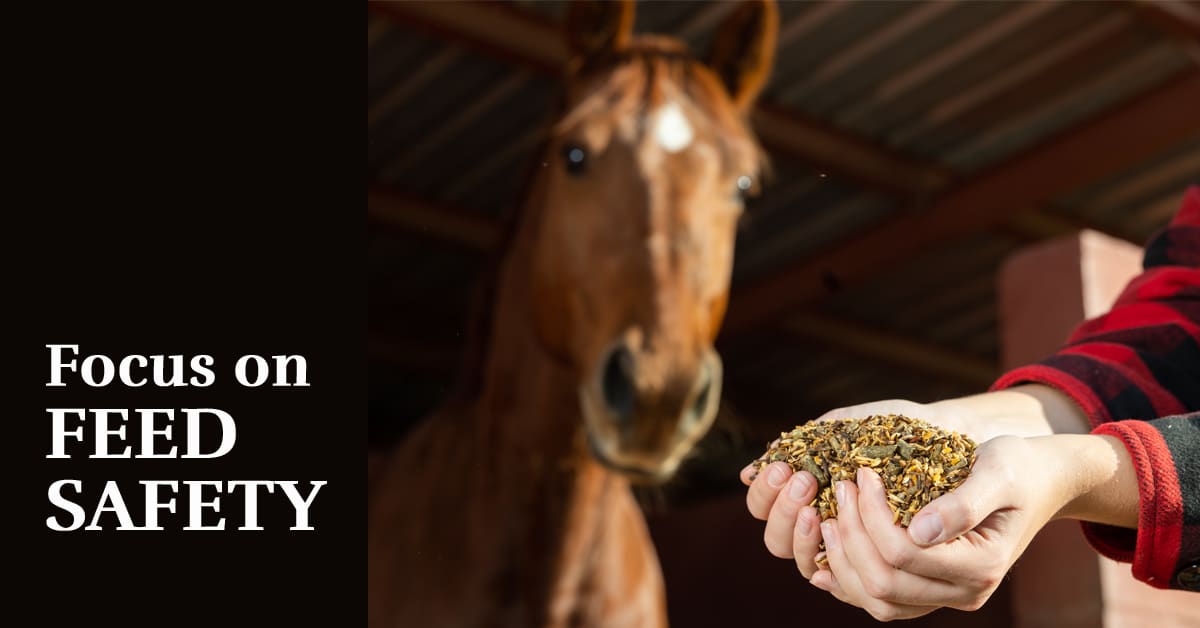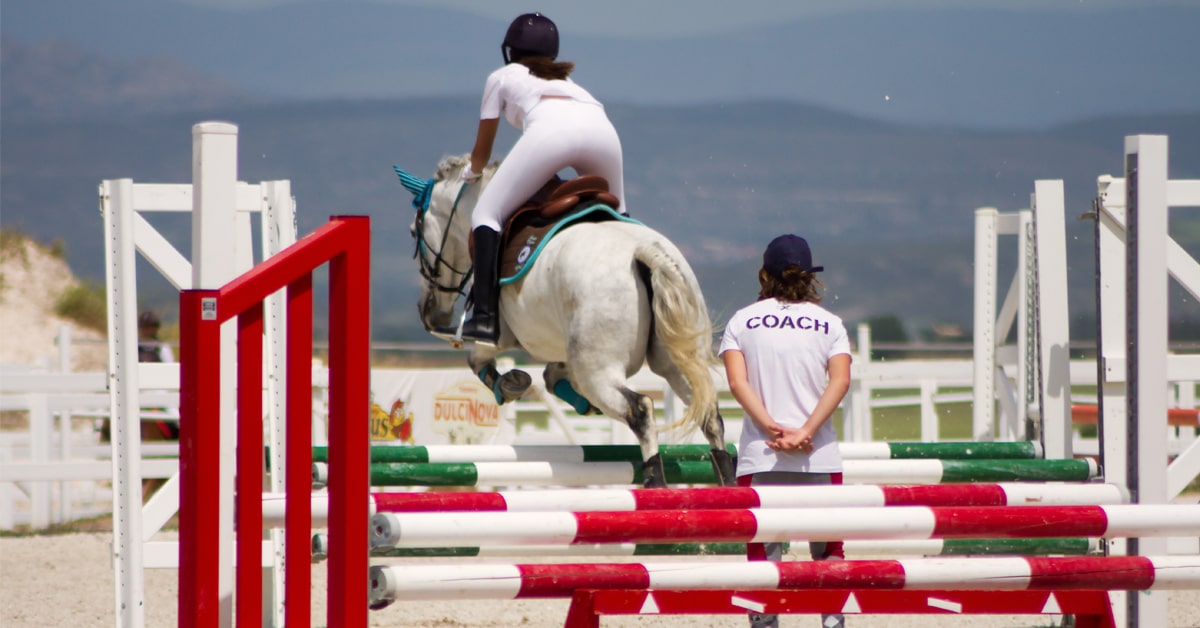A warmup/cooldown routine is especially important for event horses if they are to contend with the demands of three phases, says Canadian Eventing Team member Diana Burnett, who offers the following tips:
“The warmup is really important for your horse’s ligaments and joints, whether you are flatting or jumping. There’s a lower risk of injury to your horse if you warm up properly.
I get on and walk a bit in both directions. In winter, you will want to walk longer, which can be difficult, as you are cold and want to get going! An older horse will need more time to get the creaks out. The warmup period depends on the horse, but I’d say generally 15 to 20 minutes.
Walk on a loose rein in both directions, then get the horse working into the bridle and trotting a bit, long and low. Add circles, serpentines, change directions to get him supple and bending. Add a bit of leg yield and canter long and low.
In the winter, it can be challenging to get your horse to relax in the warmup. He is sick of the arena, or the footing outdoors is not good and he can’t run around, so he wants to play when he gets into the arena. Ask for a lot of forward and back in all paces to get his focus.
Other horses may be a bit lazy as they start. I have a horse like that and I let him poke around a bit, but you don’t want him ignoring your aids. You don’t have to gallop at Mach 10, but you want him to listen. Always use your leg first – give a good nudge if he’s not responding – and if he doesn’t, revert to other aids such as a whip or spurs.
I know my horse is ready for work when I feel him pushing into the bridle and wanting to take me forward. Some may start blowing or snorting and it’s a matter of knowing your horse. I want to feel that they are coming through and getting loose in their back.
For cooling down, I do the same as I did warming up. I finish long and low to stretch his neck and back. Stretching prevents the buildup of lactic acid in horses’ muscles and it’s a nice reward after being in a tighter frame. Their heart rate and respiration should come back to normal.
I might take my horse for a little hack. You want the end of the ride to be relaxing and pleasant for the horse; you want him to come back to the barn with his ears pricked up.
On really hot days, I find they cool down faster with cool water on them. After a gallop, I’ll walk them back to the barn, get off and hose them. If it’s a cool day, such as in Florida in the early winter mornings when it’s only a few degrees above zero, I’ll put a scrim and wool cooler on them until they are cool.”
The Latest
